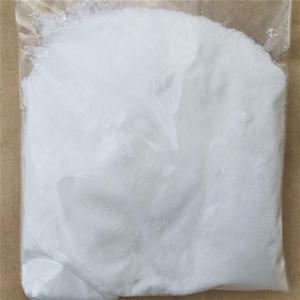

Factory CAS 9063-38-1 Carboxy methyl starch sodium / Sodium Starch Glycolate / Sodium carboxyl methyl starch CMS-Na




















Sodium starch glycolate, a white to off-white powder, is devoid of taste and smell and possesses a relatively free-flowing quality. As a pharmaceutical excipient, it excels as a disintegrant in tablet formulations, promoting the tablet's dissolution upon contact with water in the gastrointestinal tract, thus ensuring the swift release of active pharmaceutical ingredients into the system. Its rapid swelling upon exposure to moisture is a notable characteristic.
Diverse variants of sodium starch glycolate cater to specific pharmaceutical requirements. Type A, sourced from potato starch, is celebrated for its expeditious disintegration, making it ideal for immediate-release tablets. Type B, derived from corn starch, provides a more gradual disintegration, fitting for controlled-release drugs. Additionally, Type C, a less prevalent form, can be obtained from various starches, each offering unique disintegration profiles. The selection of the appropriate type hinges on the intended release properties of the pharmaceutical product.
The structure of sodium starch glycolate is defined by its cross-linked polymeric makeup, which is adept at swiftly absorbing water and expanding. This expansion is crucial to its role as a disintegrant. The robustness of its cross-linked structure also ensures its stability during tablet compression, allowing it to withstand pressure yet disintegrate effectively when moistened. The granular nature, flow characteristics, and compatibility with other tablet constituents are vital structural factors influencing the performance of the final pharmaceutical product.
In producing sodium starch glycolate, materials are chosen for their purity, safety, and functional performance. Starches, predominantly from potato, corn, or wheat, undergo processing to add carboxymethyl groups, augmenting their water interaction capabilities. These materials are selected not just for their functional attributes but also for their wide-ranging compatibility with active pharmaceutical ingredients. The resultant white powder is inert, non-reactive, and stable, qualities that are imperative for preserving the integrity and effectiveness of the pharmaceuticals it is incorporated into.
Sodium starch glycolate is vital in the pharmaceutical sector for ensuring the prompt disintegration and absorption of active ingredients in oral medications. Beyond pharmaceuticals, it is employed in the food industry as a thickener and stabilizer, in cosmetics as a binder, and in the production of certain paper products. In each application, sodium starch glycolate enhances product performance, potentially boosting consumer satisfaction and loyalty.
As a super disintegrant, the primary role of sodium starch glycolate is to expedite water absorption and swelling, aiding in the disintegration of tablets and capsules within the digestive tract. This is essential for the rapid release and uptake of medications, particularly for treatments demanding swift action, such as analgesics or antihistamines. Its utility extends to non-pharmaceutical uses as a stabilizer and thickener, contributing to the uniformity and quality of various products.
Notable for its high swelling capacity, swift disintegration potential, and excellent compatibility with numerous active pharmaceutical ingredients, sodium starch glycolate is a preferred excipient for quick-acting oral dosage forms. Its adaptability is further showcased by its effectiveness in various tablet production methods, including direct compression and wet granulation, offering pharmaceutical manufacturers a versatile option.
Integrating sodium starch glycolate into pharmaceutical formulations brings multiple advantages. It accelerates tablet disintegration, thereby hastening medication release and absorption, which can translate to quicker patient relief, especially in acute care scenarios. For manufacturers, its efficacy at low concentrations and its operational versatility across different conditions can lead to more streamlined production processes.
For optimal integration, sodium starch glycolate should be added during the granulation stage of tablet formulation. The quantity used varies with the tablet type and the targeted disintegration time. Formulators must weigh the drug's characteristics, the manufacturing process, and regulatory standards when selecting the appropriate grade. Ensuring the quality of the product necessitates proper maintenance of the handling equipment, with strict adherence to cleaning and maintenance protocols to guarantee safety and prevent contamination.
The primary consumers of sodium starch glycolate span pharmaceutical firms, food and beverage producers, and cosmetic companies. Each industry values the excipient for its particular properties that align with their formulation needs. In pharmaceuticals, the rapid disintegration trait is especially prized for crafting effective oral dosage forms. The food sector appreciates its thickening prowess for enhancing product texture and consistency, while in cosmetics, its binding qualities are instrumental in creating compact powders and other solid beauty items.
Delving into the versatile uses and attributes of sodium starch glycolate on Alibaba.com offers business purchasers a thorough insight into this excipient's role across pharmaceutical and industrial applications. Its chemical profile, quality benchmarks, and varied uses underscore its significance in multiple sectors, marking it as a valuable commodity for business consideration.